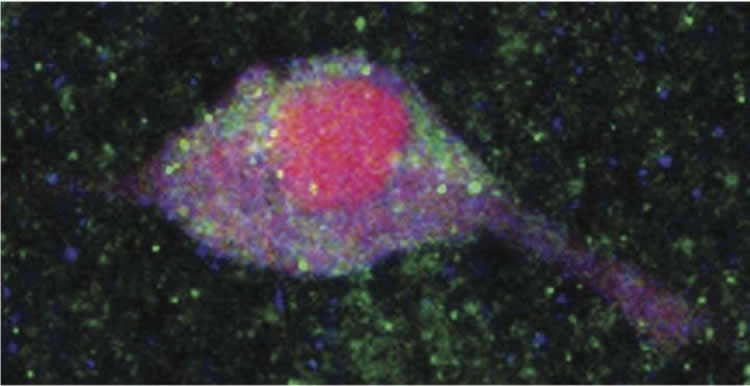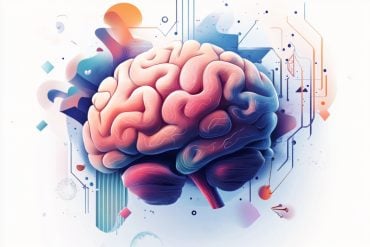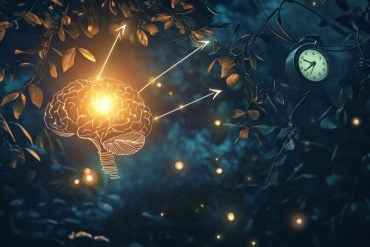Findings also shed light on food choices and obesity.
Insulin, the hormone essential to all mammals for controlling blood sugar levels and a feeling of being full after eating, plays a much stronger role than previously known in regulating release of dopamine, a neurotransmitter that helps control the brain’s reward and pleasure centers, new studies by researchers at NYU Langone Medical Center show.
“We found that when there’s more insulin in the brain, there will be more dopamine released, not less,” says study senior investigator and NYU Langone neuroscientist Margaret Rice, PhD. Her team’s new findings from laboratory and behavioral studies with rodents are set to appear in the journal Nature Communications online Oct. 27.
Rice says the experiments she and her colleagues conducted not only reaffirm that insulin helps trigger the reuptake of dopamine when insulin levels rise, but also are the first to show that the net effect is a rise in dopamine levels. The results may also be the first to demonstrate that insulin’s role in the dopamine pathway may affect and explain food choices.
In one set of experiments, Rice and her colleagues recorded a 20 percent to 55 percent increase in dopamine released in the striatal region of the rodent brain (where dopamine’s effects on the brain are felt and which governs the body’s response to getting a reward). The rise occurred along the same timeframe as the rise in insulin activity needed to process any food sugars the mice and rats ate. And this occurred despite the reabsorption, or reuptake, of dopamine that in other regions of the brain tells an animal that its appetite is satisfied.

Rice and study co-principal investigator Kenneth Carr, PhD, also conducted separate experiments with rats in which they found that animals fed low-calorie diets had a 10-fold greater sensitivity to increasing insulin levels in the brain (meaning that it took only a tenth of a rise in insulin levels as seen in rats on a normal diet to spur dopamine release). By contrast, rats on high-calorie diets lost all striatal-brain insulin responsiveness. In addition, rats offered a choice between a drink reward that was paired with either an insulin antibody injection to block hormone signaling or a mock placebo injection always favored the drink-injection combination that led to intact insulin signaling (and more dopamine).
“Our work establishes what we believe is a new role for insulin as part of the brain’s reward system and suggests that rodents, and presumably people, may choose to consume high-carb or low-fat meals that release more insulin – all to heighten dopamine release,” says Rice, a professor in the Department of Neurosurgery at NYU Langone and a member of NYU Langone’s Druckenmiller Neuroscience Institute.
Rice says this finding is important because chronically elevated insulin levels and lowered insulin sensitivity in the brain are closely tied to obesity and type II diabetes, both very prevalent in the United States.
Rice says the team plans further experiments on how insulin influences the mammalian brain’s control over food motivation and reward pathways, and whether changes in insulin sensitivity brought about by obesity can be reversed or even prevented.
“If our future experiments prove successful,” says Rice, “it could confirm our hypothesis that when people refer to an insulin-glucose rush, they may really be referring to a dopamine reward rush. And there are healthy ways to get that by making smart food choices.”
Besides Rice and Carr, other NYU Langone researchers involved in the study were lead study investigator Melissa Stouffer, PhD; Catherine Woods, BA; Jyoti Patel, PhD; Christian Lee, PhD; Paul Whitkovsky, PhD; Li Bao, PhD; Robert Machold, PhD; Kymry Jones, PhD; Soledad Cabeza de Vaca, PhD; and Maarten Reith, PhD.
Funding: Funding support for the research was provided by grants from the National Institute on Drug Abuse and the National Institute of Neurological Disorders and Stroke, both members of the National Institutes of Health. Corresponding grant numbers are R01 DA033811, a multiple-principal investigator award; R01 DA03956; and R01 NS036362. Additional funding support came from a Brain and Behavior Research Institute NARSAD independent investigator award.
Source: David March – NYU Langone Medical Center
Image Source: The image is courtesy of Nature Communications
Original Research: Full open access research for “Insulin enhances striatal dopamine release by activating cholinergic interneurons and thereby signals reward” by Melissa A. Stouffer, Catherine A. Woods, Jyoti C. Patel, Christian R. Lee, Paul Witkovsky, Li Bao, Robert P. Machold, Kymry T. Jones, Soledad Cabeza de Vaca, Maarten E. A. Reith, Kenneth D. Carr and Margaret E. Rice in Nature Communications. Published online October 27 2015 doi:10.1038/ncomms9543
Abstract
Insulin enhances striatal dopamine release by activating cholinergic interneurons and thereby signals reward
Insulin activates insulin receptors (InsRs) in the hypothalamus to signal satiety after a meal. However, the rising incidence of obesity, which results in chronically elevated insulin levels, implies that insulin may also act in brain centres that regulate motivation and reward. We report here that insulin can amplify action potential-dependent dopamine (DA) release in the nucleus accumbens (NAc) and caudate–putamen through an indirect mechanism that involves striatal cholinergic interneurons that express InsRs. Furthermore, two different chronic diet manipulations in rats, food restriction (FR) and an obesogenic (OB) diet, oppositely alter the sensitivity of striatal DA release to insulin, with enhanced responsiveness in FR, but loss of responsiveness in OB. Behavioural studies show that intact insulin levels in the NAc shell are necessary for acquisition of preference for the flavour of a paired glucose solution. Together, these data imply that striatal insulin signalling enhances DA release to influence food choices.
“Insulin enhances striatal dopamine release by activating cholinergic interneurons and thereby signals reward” by Melissa A. Stouffer, Catherine A. Woods, Jyoti C. Patel, Christian R. Lee, Paul Witkovsky, Li Bao, Robert P. Machold, Kymry T. Jones, Soledad Cabeza de Vaca, Maarten E. A. Reith, Kenneth D. Carr and Margaret E. Rice in Nature Communications. Published online October 27 2015 doi:10.1038/ncomms9543






